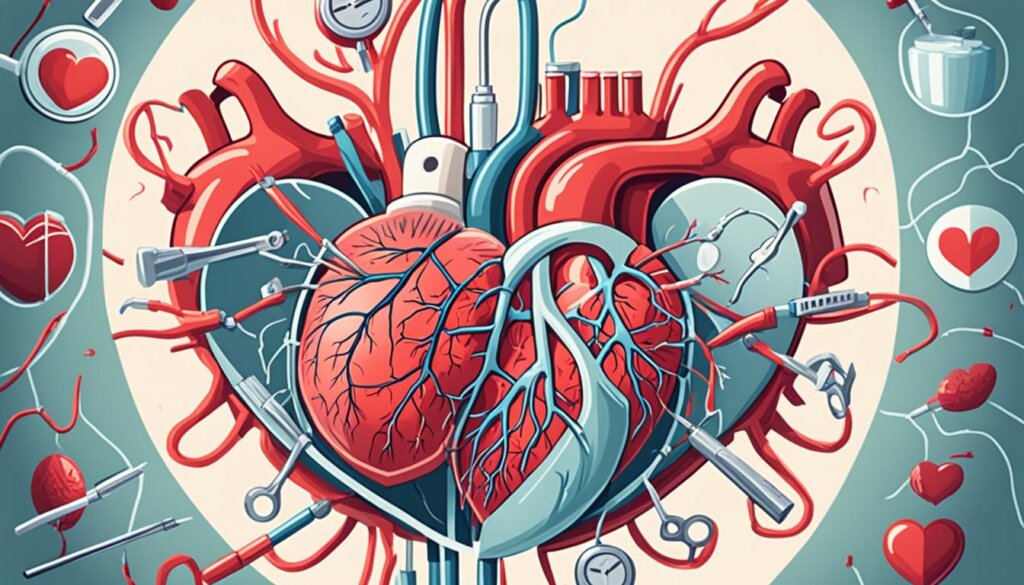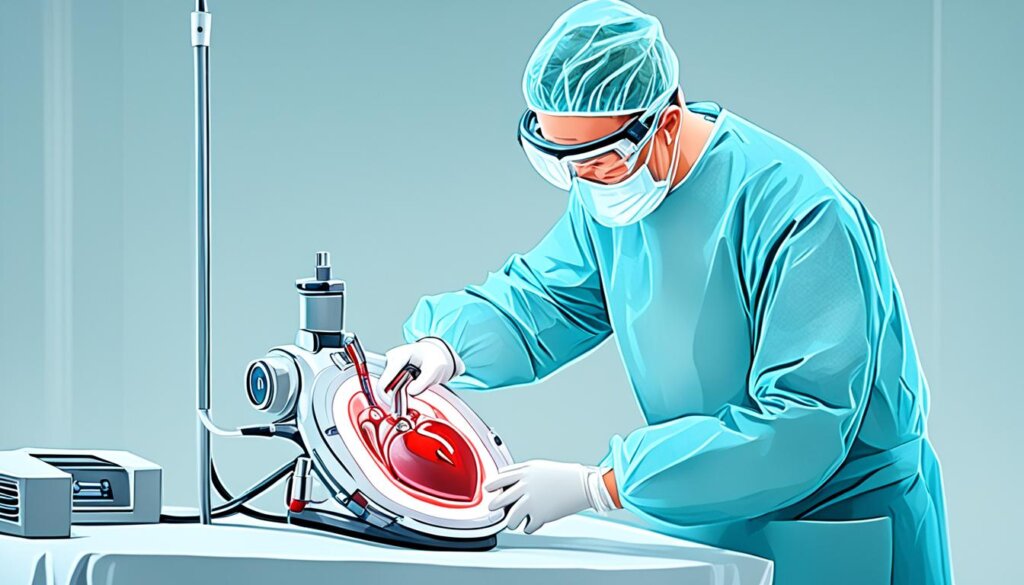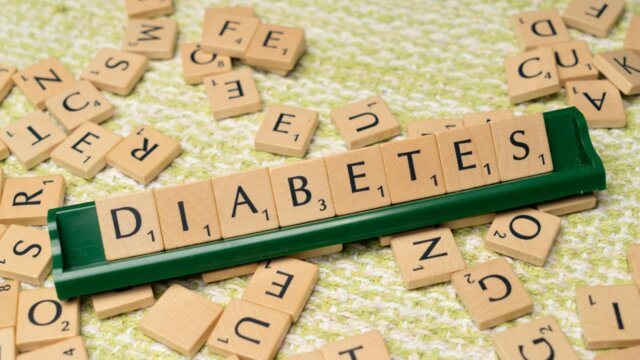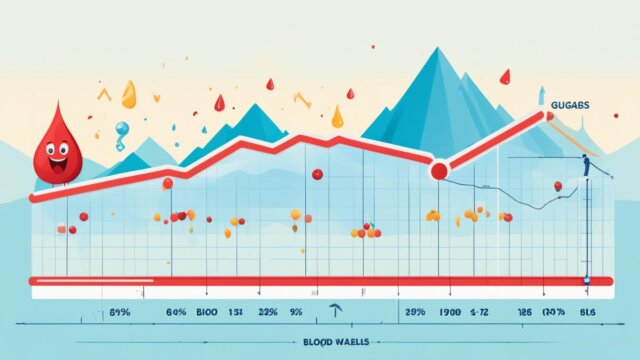FTC disclaimer: This post may contains affiliate links and we will be compensated if you click on a link and make a purchase.
Heart diseases are the top cause of death worldwide. They make up about 1 in 4 deaths in the U.S.. These conditions affect the heart and blood vessels. They come in many types, each with its own symptoms and treatments.
Understanding these diseases is key to keeping your heart healthy. From common coronary artery disease to rare congenital heart defects, knowing about them helps.
Key Takeaways
- Heart disease is the leading cause of death in the United States, responsible for approximately 1 in 4 deaths.
- Heart disease can affect individuals of all genders, races, and ethnicities, with certain types being more common in young people and athletes under 35.
- Congenital heart defects and other structural heart issues may not present noticeable symptoms and are often discovered during routine medical checks.
- Lifestyle factors, medical conditions, and family history can all increase the risk of developing heart disease.
- Treatment options for heart disease include lifestyle changes, medications, and surgical interventions, depending on the specific type and severity of the condition.
Understanding Heart Diseases
The cardiovascular system is a complex network of organs and blood vessels. It pumps blood throughout the body. It delivers oxygen and nutrients to tissues and removes waste products. At the heart of this system is the heart. It’s a vital organ that acts as a pump. It has four chambers and valves that control blood flow.
Knowing how the cardiovascular system works is key to understanding heart diseases. These diseases can be serious if not treated.
What are Heart Diseases?
Heart diseases, or cardiovascular diseases, affect the heart and blood vessels. They can include narrowing of the arteries (atherosclerosis) or abnormal heart rhythms (arrhythmia). Heart valve problems are also part of these diseases. If not managed, they can lead to heart attacks, strokes, and heart failure.
The Cardiovascular System
The cardiovascular system moves blood, oxygen, and nutrients around the body. The heart is at the center, pumping blood. It has four chambers and valves to control blood flow. If this system is damaged, it can cause serious heart diseases.
“Heart disease is the leading cause of death globally, responsible for over 17 million deaths per year. Understanding the anatomy and function of the cardiovascular system is crucial for recognizing and managing these life-threatening conditions.” – World Health Organization
Cardiovascular disease (CVD) is a major cause of death and disability in the UK. It can often be prevented by living a healthy life. This includes eating well, exercising regularly, and avoiding smoking, high blood pressure, and high cholesterol.
- Atherosclerosis is a condition where plaque builds up in arteries, narrowing them and reducing blood flow.
- Ischemic stroke happens when a brain blood vessel gets blocked by a clot.
- Hemorrhagic stroke is when a brain blood vessel bursts, often from high blood pressure.
- Heart failure means the heart can’t pump blood well.
- Arrhythmia is an abnormal heart rhythm, with types like bradycardia (slow heart rate) and tachycardia (fast heart rate).
- Heart valve problems include stenosis (valves don’t open enough) and regurgitation (valves don’t close right).
Understanding the cardiovascular system and its diseases is key to keeping the heart healthy. By knowing the symptoms and risk factors, people can prevent or manage these serious conditions.
Types of Heart Diseases
Heart diseases cover many conditions that affect the heart’s structure and function. They range from common coronary artery disease to rare but serious congenital heart diseases. Knowing about these diseases helps with prevention, diagnosis, and treatment.
Coronary Artery Disease (CAD)
Coronary artery disease is the top heart disease. It happens when plaque builds up in arteries that supply blood to the heart. This can cause chest pain, shortness of breath, and sometimes a heart attack. Women might have different symptoms like unusual fatigue, sleep issues, and indigestion. Quick action, like calling 9-1-1 for symptoms, can save lives.
Arrhythmia
Arrhythmia means an irregular heartbeat. It can be caused by heart damage or conditions like heart failure or congenital heart disease. The type and severity can be treated with medicines, lifestyle changes, or procedures.
Heart Failure
Heart failure means the heart can’t pump blood well. It’s often due to high blood pressure, a heart attack, or bad heart valves. Symptoms include shortness of breath, swelling, and feeling tired and weak. Risk factors include high blood pressure, heart attack, and diabetes.
Valvular Heart Disease
Valvular heart disease makes the heart valves work poorly. This can cause narrowing or leakage. It can make pumping blood hard and might need surgery or a new valve.
Pericardial Disease
Pericardial disease affects the sac around the heart. It can cause inflammation, fluid, or scarring. This can hurt the heart’s function and needs special treatment.
Cardiomyopathy
Cardiomyopathy is a disease of the heart muscle. It makes pumping blood harder. Causes include genes, medical conditions, or viruses.
Congenital Heart Disease
Congenital heart diseases are present at birth. They can be simple or very serious. These diseases can include holes in the heart or valves that don’t work right.
Knowing about heart disease helps spot symptoms early and get the right treatment. Being informed helps keep the heart healthy and lowers the risk of serious problems.
Heart Diseases: Causes and Risk Factors
Heart diseases have many causes, like atherosclerosis, age, lifestyle, health conditions, and family history. Knowing these factors is key to preventing and managing heart issues.
Atherosclerosis
Atherosclerosis is a big cause of heart disease. It happens when plaque builds up in arteries. This can block blood flow and cause heart problems.
Age and Gender
Heart disease risk goes up with age, and men face a higher risk than women. But, women’s risk jumps after menopause.
Lifestyle Factors
Our choices affect our heart health. Smoking, not moving enough, eating badly, drinking too much, and not handling stress well can lead to heart disease.
Medical Conditions
Some health issues, like high blood pressure, high cholesterol, diabetes, and obesity, raise heart disease risk. People with these conditions should work with their doctors to stay healthy and lower their risk.
Family History
Genetics can affect heart disease risk. If your family has heart disease, you might be more likely to get it too, especially if you add lifestyle risks.
Risk Factor | Impact |
|---|---|
Smoking | Increases the likelihood of dying from a heart attack by 2-5 times, makes a person 2 times more likely to die from a stroke, and 3 times more likely to die from sudden cardiac arrest |
Physical Inactivity | Over 80% of Australian adults are not active enough, which raises their risk of heart disease and other health problems |
Obesity | About two-thirds of Australian adults are overweight or obese, which greatly increases their chance of heart disease |
Alcohol Consumption | Drinking too much can cause heart disease. It’s best to have no more than 10 standard drinks a week and not more than 4 on any one day for a lower risk |
Knowing these risk factors helps people take steps to lower their chance of heart diseases. This can improve their heart health.
Symptoms of Heart Diseases
Heart diseases show many symptoms. Knowing these signs is key for catching them early and treating them right. Common symptoms include chest pain, shortness of breath, and feeling very tired. A heart attack can also cause specific signs like crushing chest pain, pain in the shoulders or arms, sweating, and feeling sick to your stomach.
Chest Pain
Chest pain is often the first sign of heart trouble or a heart attack. This pain can feel like a lot or just a little bit. It might seem like indigestion or heartburn. Women, older people, and those with diabetes might not have chest pain. They might feel tired, have trouble breathing, and feel weak.
Shortness of Breath
Feeling like you can’t breathe well is a sign of heart failure. This can happen when you’re active or just sitting still. Fluid in the lungs can cause coughing and wheezing. Swelling in the lower legs and gaining weight can also mean heart issues.
Fatigue
Feeling very tired, especially if it’s sudden or severe, could mean heart problems. This happens when the heart can’t pump blood well. This leads to not enough oxygen and nutrients for the body.
Heart Attack Symptoms
A heart attack can cause extreme anxiety, feeling like you might pass out, feeling lightheaded, nausea, or vomiting, fast heartbeat, trouble breathing, and heavy sweating. Plaque buildup in blood vessels can make a heart attack more likely. Not enough blood flow to the legs can cause pain, numbness, and feeling cold in the legs or feet.
Some heart diseases don’t have clear symptoms. This makes finding them early and treating them important. Regular doctor visits can help spot heart issues early.

Diagnosing Heart Diseases
Doctors start by taking a detailed medical history and doing a physical check-up. They want to know about your symptoms, past health, and lifestyle. They listen to your heart and check your blood pressure and pulse during the exam.
Diagnostic Tests
Your doctor might order tests to check your heart after the initial check-up. These tests look at your heart’s structure, function, and electrical activity. Here are some tests you might get:
- Electrocardiogram (EKG or ECG): This test records your heart’s electrical activity. It’s quick and doesn’t hurt.
- Echocardiogram: This uses ultrasound to make detailed pictures of your heart. It shows how well your heart is working. The test takes about 45 minutes.
- Stress Test: This test shows how your heart does under stress, often with an echocardiogram. It shows how your heart reacts when you’re active.
- Cardiac Catheterization: This is a more detailed test. A thin tube is put into a blood vessel and moved to your heart. It checks blood flow, heart function, and more.
Your doctor might also order other tests like a nuclear stress test or a Holter monitor. These give more info about your heart health.
Diagnostic Test | Duration |
|---|---|
Electrocardiogram (EKG or ECG) | Less than 5 minutes |
Echocardiogram | About 45 minutes |
Stress Test | Varies |
Cardiac Catheterization | Invasive procedure |
Your medical history, physical exam, and tests help your doctor figure out what’s wrong with your heart. They use this info to make a treatment plan.
Treatment Options for Heart Diseases
Heart diseases need a mix of lifestyle changes, medicines, and sometimes surgery. These steps help ease symptoms, stop more problems, and make the heart healthier.
Lifestyle Changes
Living a healthy life is key for the heart. This means eating right, moving often, stopping smoking, and handling stress. By doing these things, people can lower their risk of heart disease and its problems.
Medications
Medicines are very important for heart health. Doctors often give out aspirin, drugs to lower cholesterol and blood pressure, and blood thinners. These medicines help control symptoms, stop the disease from getting worse, and cut down the chance of heart attacks and strokes.
Surgical Procedures
For serious heart issues, surgery might be needed. This includes things like angioplasty, bypass surgery, and fixing or replacing heart valves. Thanks to new technology, surgery can be less invasive, which means less risk and quicker recovery.
Treatment Option | Description |
|---|---|
Lifestyle Changes | Adopting a healthy diet, regular exercise, quitting smoking, and managing stress |
Medications | Aspirin, cholesterol-lowering drugs, blood pressure medications, and anticoagulants |
Surgical Procedures | Angioplasty, coronary artery bypass surgery, and heart valve repair or replacement |
The right treatment for heart diseases depends on the condition, how bad it is, and the person’s health. Often, a mix of lifestyle changes, medicines, and surgery is needed to manage the condition well and improve life quality.

Heart Diseases
Heart diseases cover many conditions that affect the heart and blood vessels. They can be mild or severe and affect health in different ways. Knowing about heart diseases helps keep the heart healthy and prevents problems.
Coronary artery disease (CAD) is a common heart disease. It happens when plaque builds up in arteries that bring blood to the heart. This can cause chest pain, shortness of breath, and in bad cases, a heart attack. Other heart diseases include arrhythmia, an abnormal heart rhythm, and heart failure, when the heart can’t pump blood well.
Things that increase the risk of heart disease are age, gender, family history, and lifestyle choices like diet and smoking. Having high blood pressure, high cholesterol, or diabetes also raises the risk.
To diagnose heart diseases, doctors look at your medical history, do a physical check-up, and run tests like electrocardiograms and echocardiograms. Treatment can be simple changes in lifestyle, medicine, or surgery, based on the condition and how serious it is.
Stopping heart diseases before they start is key. This means living a healthy life, managing risk factors, and getting regular check-ups. By taking care of our heart health, we can lower the risk of getting heart diseases and stay healthier overall.
“Cardiovascular disease is the leading cause of death worldwide, with heart disease being the most common type.”
In summary, heart diseases are complex and can greatly affect health. By understanding them, we can take steps to keep our hearts healthy and lower the risk of getting these diseases.
Prevention of Heart Diseases
Keeping a healthy lifestyle is key to avoiding heart diseases. This means eating well, staying active, stopping smoking, and handling stress well.
Maintaining a Healthy Diet
Eating lots of fruits, veggies, whole grains, and lean meats can cut heart disease risk. It’s also good to eat less bad fats, salt, and sugars for your heart’s health.
Regular Exercise
Doing at least 150 minutes of moderate aerobic exercise each week helps your heart. This can be walking, swimming, or biking.
Quitting Smoking
Stopping smoking greatly lowers heart disease risk. Your heart starts to heal right after you quit. After a year without cigarettes, your risk is half that of a smoker.
Managing Stress
Stress can be lowered with exercise, relaxation, mindfulness, yoga, or meditation.
By doing these things, you can greatly lower your chance of getting heart diseases. This keeps your heart healthy.
Living with Heart Diseases
For people with heart diseases, it’s key to watch for symptoms, follow your treatment, and build a strong support network. Coronary artery disease (CAD) is the top heart disease in the U.S. It can come from getting older, being a certain gender, having other health issues, your lifestyle, or family history.
If your coronary arteries get narrow, you might feel chest pain, get short of breath, or feel very tired when you do things. In the worst cases, you could have a heart attack.
Monitoring Symptoms
Keep an eye on any changes in your chest pain, shortness of breath, or other symptoms. Tell your doctor right away if you notice anything different. This helps find problems early and get the right help fast.
Adhering to Treatment Plan
It’s very important to follow your doctor’s advice, including taking your medicines, making lifestyle changes, and getting surgery if needed. Eating better, exercising regularly, losing weight, reducing stress, and quitting smoking can really help CAD patients. Doctors might prescribe medicines like aspirin, drugs to change cholesterol levels, beta-blockers, or do procedures like angioplasty or coronary artery bypass surgery.
Support System
Having a strong support system, like family, friends, or cardiac rehab programs, can make a big difference for people with heart diseases. These programs offer education, counseling, and exercise tips to help you manage your condition and improve your heart health.
By watching your symptoms, following your treatment, and getting support, you can handle your heart disease better and feel better overall. It’s also key to get regular blood pressure, cholesterol, and diabetes checks to keep an eye on your heart health and risk factors.
Screening Recommendation | Frequency |
|---|---|
Blood Pressure Screening | At least once every two years, or annually for those with risk factors |
Cholesterol Screenings | Every 5 years, with more frequent screenings for those aged 55-65 and over 65 |
Type 2 Diabetes Screening | Starting at age 45, or earlier for those with risk factors |
BMI Measurement | Regularly to monitor overweight and obesity, which are linked to heart disease |
Waist Circumference | Measure waist size to assess heart disease risk, with thresholds of 40 inches for men and 35 inches for women |
By being proactive and using support, people with heart diseases can manage their condition better and aim for better heart health.
Cardiovascular Conditions and Heart Health
Keeping your heart healthy is key because heart diseases are the top cause of death in the U.S.. About 8 out of every 1,000 kids are born with heart issues. Over 6.7 million Americans deal with heart failure. This number could jump to 8.5 million by 2030. Strokes are a big deal, causing lots of disability and death in the U.S..
Worldwide, heart and blood vessel diseases cause a lot of deaths, about 17.9 million in 2019. Most of these deaths were from heart attacks and strokes. Most happened in poor countries. We need to work on finding and preventing these diseases early, as they cause a lot of early deaths.
Cardiovascular Disease | Prevalence | Impact |
|---|---|---|
Coronary Artery Disease (CAD) | Most common type of heart disease | Leading cause of heart attacks |
Heart Failure | Affects over 6.7 million Americans | Projected to rise to 8.5 million by 2030 |
Stroke | The leading cause of disability | One of the top causes of death in the U.S. |
Rheumatic Heart Disease | Accounts for about 2% of CVD deaths globally | Preventable and treatable condition |
We need a big plan to fight heart diseases, with early detection, prevention, and good treatments. Knowing about these diseases helps people take steps to keep their hearts healthy and lower their risk.

The “Global Action Plan for the Prevention and Control of NCDs 2013-2020″ wants to cut early deaths from these diseases by 25% by 2025. This plan shows how important it is to tackle heart diseases worldwide.
Risk Factors for Developing Heart Disease
Many things can make it more likely to get heart diseases. Knowing these can help keep your heart healthy.
Cholesterol Levels
High LDL (bad) cholesterol and low HDL (good) cholesterol can lead to artery blockages. Experts say your total cholesterol should be under 200 mg/dL. HDL should be 60 mg/dL or higher. LDL should be under 100 mg/dL, and triglycerides should be under 150 mg/dL.
Blood Pressure
High blood pressure can harm your blood vessels and heart. For a healthy adult, blood pressure should be 120/80. Sadly, about 1 in 3 adults have blood pressure over 130/80.
Diabetes
Diabetes means your blood sugar is too high and raises heart disease risk. To avoid heart problems, manage diabetes with diet, exercise, and medicine as your doctor says.
Obesity
Being too heavy can cause high blood pressure and bad cholesterol, making heart disease more likely. A BMI over 25 means you’re overweight, and over 30 means you’re obese.
Understanding and dealing with these risks can lower your chance of heart disease. This helps keep your heart healthy.
Advances in Heart Disease Treatment
Heart disease treatment has made big strides in recent years. This brings new hope to those with heart conditions. New heart disease medications and less invasive surgeries are changing how we treat heart disease.
New Medications
Scientists are finding new ways to help heart health. They’re making new heart disease medications. These include new blood thinners and cholesterol drugs. They aim to make treatment easier and safer.
Using all-in-one pills has made treatment easier for patients. This could help prevent more heart problems.
Minimally Invasive Procedures
New tech has led to less invasive heart surgeries. Procedures like TAVR and robotic surgery are less harsh than old methods. They help patients recover faster and feel less pain.
Removing blood clots with thrombectomy is better than old treatments for some stroke patients. It works well in many countries.
Cardiac Rehabilitation
Cardiac rehabilitation is key to treating heart disease. It includes exercise, learning, and support. This helps patients manage their heart conditions better and lowers the risk of future problems.
Condition | Incidence and Impact |
|---|---|
Aortic Valve Stenosis (AVS) | Each year, as many as 300,000 people in the United States are diagnosed with AVS. |
Mitral Regurgitation | Aortic stenosis causes 1.7% of the U.S. population to suffer from mitral regurgitation, rising to about 9.3% in those over age 75. |
Congenital Heart Defects (CHDs) | About 40,000 U.S. babies are born with CHDs each year, with 69% of babies born with critical CHDs expected to survive to at least 18 years of age, and 95% of those born with non-critical CHDs expected to survive until at least age 18. |
New treatments for heart disease bring hope to those affected. By using new drugs, less invasive surgeries, and rehab, we can give better care. This improves life quality for patients and lessens the impact of heart disease.

“The future of heart disease treatment is bright, with researchers and clinicians working tirelessly to develop new and improved therapies that can make a real difference in the lives of patients.”
The Importance of Early Detection
Finding heart diseases early is key. It helps people manage their health better and avoid more serious problems. Sadly, many don’t know they have heart disease until it’s too late. Four out of five people don’t realize they have heart failure until they’re in the emergency room.
Black and Hispanic people face bigger risks with heart disease. They’re more likely to have heart failure and spend more time in the hospital. They also get less medical care, which makes things worse.
Early detection helps fix these issues. It gives people the tools to keep their hearts healthy. By finding risks like high blood pressure and diabetes early, we can act fast.
This approach cuts down the risk of serious heart problems. It makes people feel better and live better lives.
Early detection is good for everyone’s wallets too. Screening for heart diseases can save money and make health care fairer. It’s cheaper to prevent heart problems than to treat them later.
In short, catching heart diseases early is very important. It helps people take charge of their health and stop serious problems before they start. By focusing on early detection and fixing health gaps, we can make heart diseases easier to manage. This means people can live happier, healthier lives.
Conclusion
Finding heart diseases early is key to getting help fast. The American Heart Association says nearly half of U.S. adults have heart issues. This makes it a top cause of death for both men and women.
Regular visits to the doctor can spot heart diseases early. This is before they get worse or cause big problems. Screening tests and watching risk factors help a lot.
Knowing about heart diseases, their causes, and treatments helps you stay healthy. Heart disease is a big health issue worldwide. In low and middle-income countries, over 80 percent of heart disease deaths happen.
But, by catching heart diseases early and living healthier, you can help prevent them. This improves your health overall.
To sum up, remember these important points. Early detection of heart disease is key. Regular check-ups are a must. Knowing about heart diseases, their causes, and treatments is also vital.
By doing these things, you can greatly improve your heart health. This lowers the risk of serious heart problems.
FAQ
What are the different types of heart diseases?
Heart diseases include coronary artery disease (CAD), arrhythmia, heart failure, and more. They also cover valvular heart disease, pericardial disease, cardiomyopathy, and congenital heart defects.
What are the leading risk factors for heart diseases?
High cholesterol, high blood pressure, and diabetes are big risks. So are obesity, unhealthy habits like poor eating and not moving enough, smoking, and being older or male. Family history also plays a part.
How are heart diseases diagnosed?
Doctors use your medical history and physical check-up to spot heart diseases. They also run tests like EKGs, echocardiograms, stress tests, and cardiac catheterizations.
What are the common symptoms of heart diseases?
Heart diseases often cause chest pain or discomfort, shortness of breath, and feeling tired. A heart attack can bring on crushing chest pain, pain in the shoulders or arms, sweating, and nausea.
How can heart diseases be treated?
Treating heart diseases might mean changing your lifestyle, taking medicine, or having surgery. This could be angioplasty, bypass surgery, or fixing heart valves.
How can heart diseases be prevented?
To prevent heart diseases, eat well, exercise often, quit smoking, manage stress, and keep conditions like high cholesterol and blood pressure under control.
What is the role of cardiac rehabilitation in managing heart diseases?
Cardiac rehab programs help with exercise, learning, and support. They improve life quality for people with heart diseases.
How can early detection of heart diseases make a difference?
Catching heart diseases early with regular check-ups and tests helps. This leads to quicker action and better management, which can greatly improve outcomes and lower risks.








